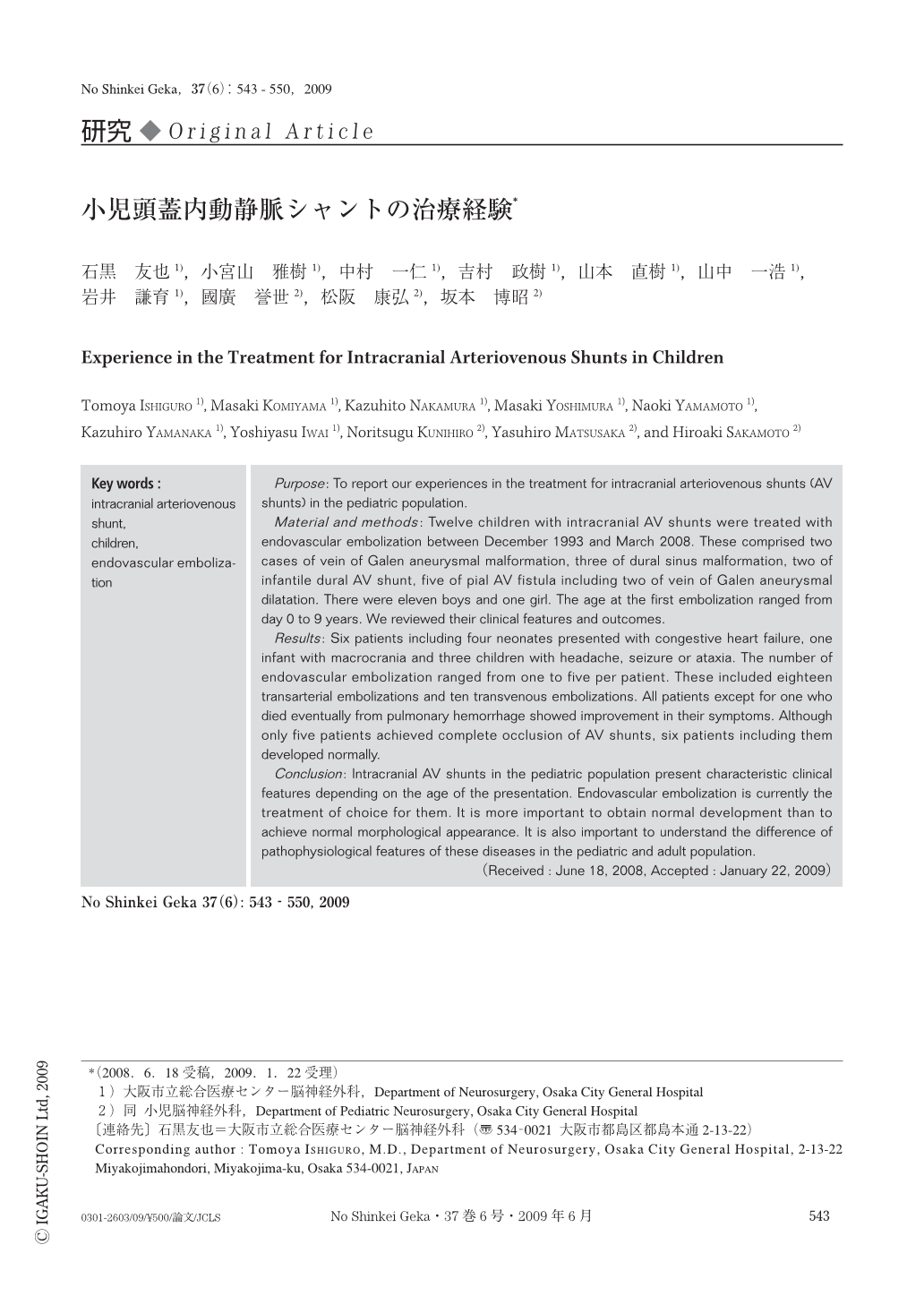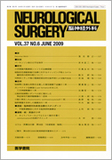Japanese
English
- 有料閲覧
- Abstract 文献概要
- 1ページ目 Look Inside
- 参考文献 Reference
Ⅰ.はじめに
小児期に頭蓋内動静脈シャントを伴う疾患は頻度の高い順に広義の脳動静脈奇形(arteriovenous malformation:AVM),ガレン大静脈瘤(vein of Galen aneurysmal malformation:VGAM),硬膜動静脈瘻(dural arteriovenous fistula:dural AVF)がある1-3,6-10).AVMはnidusをもつ狭義のAVMとnidusをもたずに栄養血管が直接に流出静脈につながるpial AVFとに分けられる10).狭義のAVMはnidusを伴うのに対し,VGAM,dural AVF,pial AVFはfistulaのみからなる動静脈シャントである.また狭義のAVMが症候性になるのは年長児以降に多く,その臨床症状や管理は成人例と大きな違いはない.VGAM,dural AVF,pial AVFを対象とした小児頭蓋内動静脈シャントの臨床症状と治療成績を報告する.
Purpose: To report our experiences in the treatment for intracranial arteriovenous shunts (AV shunts) in the pediatric population.
Material and methods: Twelve children with intracranial AV shunts were treated with endovascular embolization between December 1993 and March 2008. These comprised two cases of vein of Galen aneurysmal malformation, three of dural sinus malformation, two of infantile dural AV shunt, five of pial AV fistula including two of vein of Galen aneurysmal dilatation. There were eleven boys and one girl. The age at the first embolization ranged from day 0 to 9 years. We reviewed their clinical features and outcomes.
Results: Six patients including four neonates presented with congestive heart failure, one infant with macrocrania and three children with headache, seizure or ataxia. The number of endovascular embolization ranged from one to five per patient. These included eighteen transarterial embolizations and ten transvenous embolizations. All patients except for one who died eventually from pulmonary hemorrhage showed improvement in their symptoms. Although only five patients achieved complete occlusion of AV shunts, six patients including them developed normally.
Conclusion: Intracranial AV shunts in the pediatric population present characteristic clinical features depending on the age of the presentation. Endovascular embolization is currently the treatment of choice for them. It is more important to obtain normal development than to achieve normal morphological appearance. It is also important to understand the difference of pathophysiological features of these diseases in the pediatric and adult population.

Copyright © 2009, Igaku-Shoin Ltd. All rights reserved.


